Steve Bull's Blog, page 1331
August 27, 2017
Hurricane Harvey Will Render Some Parts Of Texas ‘Uninhabitable For An Extended Period Of Time’
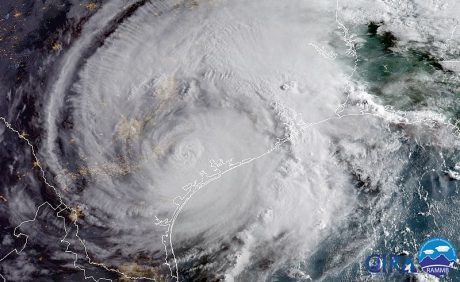 Do you remember what Hurricane Katrina did to New Orleans? Well, now we are watching the same thing happen to southeast Texas. On Friday, Hurricane Harvey made landfall as a category 4 hurricane. It is the first hurricane to make landfall in the United States in 12 years, and it is the most powerful storm to hit the state of Texas in at least 50 years. One meteorologist is saying that what we are witnessing is “worse than the worst-case scenario for Houston”, and another stated that this storm “could easily be one of the worst flooding disasters in U.S. history”.
Do you remember what Hurricane Katrina did to New Orleans? Well, now we are watching the same thing happen to southeast Texas. On Friday, Hurricane Harvey made landfall as a category 4 hurricane. It is the first hurricane to make landfall in the United States in 12 years, and it is the most powerful storm to hit the state of Texas in at least 50 years. One meteorologist is saying that what we are witnessing is “worse than the worst-case scenario for Houston”, and another stated that this storm “could easily be one of the worst flooding disasters in U.S. history”.
It would be difficult to overstate the devastation in the Houston area at this moment. Hurricane Harvey has ripped roofs off of homes, turned vehicles over and snapped thousands of trees. Thousands have been rescued from their homes and vehicles, and it is being reported that so far five people have died. In fact, one woman’s dead body was actually spotted floating down the street.
According to the National Weather Service, over 24 inches of rain fell in Houston in just a 24 hour period. More rain continues to fall in southeast Texas, and meteorologists are running out of adjectives to describe the nightmare that is currently unfolding…
“It’s catastrophic, unprecedented, epic — whatever adjective you want to use,” Patrick Blood, a National Weather Service meteorologist, told the Chronicle. “It’s pretty horrible right now.” The newspaper reported the weather service said five people have died in the Houston area in unconfirmed flood-related deaths.
The latest forecasts are telling us that we could see a total of 40 to 50 inches of rain in southeast Texas by Thursday, and so some areas will actually receive a “year’s worth of rain” in less than a week…
…click on the above link to read the rest of the article…
The CIA and Me: How I Learned Not to Love Big Brother
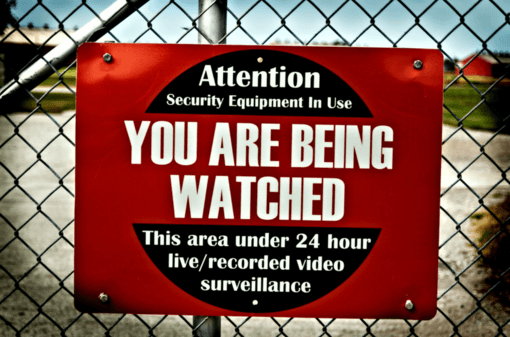
Photo by Andrea Yori | CC BY 2.0
In the wake of the 2001 terrorist attacks, Washington pursued its elusive enemies across the landscapes of Asia and Africa, thanks in part to a massive expansion of its intelligence infrastructure, particularly of the emerging technologies for digital surveillance, agile drones, and biometric identification. In 2010, almost a decade into this secret war with its voracious appetite for information, the Washington Post reported that the national security state had swelled into a “fourth branch” of the federal government — with 854,000 vetted officials, 263 security organizations, and over 3,000 intelligence units, issuing 50,000 special reports every year.
Though stunning, these statistics only skimmed the visible surface of what had become history’s largest and most lethal clandestine apparatus. According to classified documents that Edward Snowden leaked in 2013, the nation’s 16 intelligence agencies alone had 107,035 employees and a combined “black budget” of $52.6 billion, the equivalent of 10% percent of the vast defense budget.
By sweeping the skies and probing the worldwide web’s undersea cables, the National Security Agency (NSA) could surgically penetrate the confidential communications of just about any leader on the planet, while simultaneously sweeping up billions of ordinary messages. For its classified missions, the CIA had access to the Pentagon’s Special Operations Command, with 69,000 elite troops(Rangers, SEALs, Air Commandos) and their agile arsenal. In addition to this formidable paramilitary capacity, the CIA operated 30 Predator and Reaper drones responsible for more than 3,000 deaths in Pakistan and Yemen.
While Americans practiced a collective form of duck and cover as the Department of Homeland Security’s colored alerts pulsed nervously from yellow to red, few paused to ask the hard question: Was all this security really directed solely at enemies beyond our borders?
…click on the above link to read the rest of the article…
How the Deep State Ties Down Trump
America’s Deep State players have tied down President Trump on Russian sanctions and other foreign and economic policies but that doesn’t mean the struggle is over, writes ex-British diplomat Alastair Crooke.
President Trump has had his foreign policy hands and feet tied by the Russia (and Iran) Sanctions Act. He now has been rendered “helpless”: in respect to détente with Russia — gulliverized, spitefully, by his own party, working with the Democrats, to empty Trump’s constitutional prerogatives in foreign policy – and to seize them for Congress.
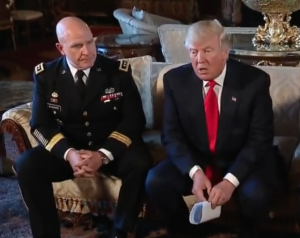
President Donald Trump announces the selection of Gen. H.R. McMaster as his new National Security Adviser on Feb. 20, 2017. (Screen shot from Whitehouse.gov)
And in a further humiliation, Trump has been “rolled” by his military minders (Generals James Mattis, H.R. McMaster and John Kelly) on his Afghan policy: he has relinquished civilian oversight of this military expedition in Afghanistan to McMaster and Mattis — the former being the presumed author of the “new” Afghan policy. The President was “rolled” on his foreign military prerogatives too – as Commander in Chief – by his triumvirate of military minders in the White House. The “civilian” leadership has given place to the “military.”
The question is whether these humiliating concessions will appease his opponents sufficiently to allow the President to “live on,” albeit as an incapacitated President, or is this just the hors d’oeuvre? It seems that the entrée may be being planned as the complete discrediting of Trump’s base – ordinary Republicans being lashed to the Trump “Titanic” – to be sunk along with its captain – as “white-supremacists, white bigots and Nazis.”
…click on the above link to read the rest of the article…
August 24, 2017
Forget OPEC, China Controls Oil Prices

U.S. shale has taken a lot of headline space recently as the biggest headwind for oil prices and the highest stumbling block for OPEC’s efforts to prop them up by cutting production. Yet, there may be another factor that could bring down oil prices as soon as next year…
China.
China has been building a strategic crude oil reserve for the last decade, but the size of that reserve remains undisclosed, with analysts making estimates based on China-bound cargoes and satellite imaging.
Last year, a Silicone Valley tech company, Orbital Insight, suggested that China may have stored as much as 600 million barrels of crude by May. This was the highest reserve estimate at the time. Since then, the reserve has in all likelihood grown, possibly exceeding the U.S. SPR, which stood at 678.9 million barrels as of August 18th this year.
This year, Chinese crude imports have run at record-breaking rates, with the average daily on par with what the U.S. imports, at about 8 million barrels, the Financial Times notes in an analysis. A lot of these, however, are going into storage tanks, analysts believe, and they warn that soon the tanks may fill up, wreaking havoc on prices and–more notably–on OPEC.
The cartel, Russia and 11 other producers agreed last year to remove 1.8 million bpd from global oil supply in an attempt to raise prices above US$50, with hopes for at least $60. This May, they agreed to extend the cuts to March 2018. Nevertheless, prices have remained largely stable around the $50 mark because of rising U.S. output, which last week jumped above 9.5 million bpd, according to the EIA. Related: Qatar Aims To Ease Its Reliance On LNG Exports
…click on the above link to read the rest of the article…
Why Doesn’t This Household Debt Worry Anyone?!
With all the attention going to political tensions between the USA and North Korea and the interest rate policies and monetary policies established by the various central banks around the world, we would almost forget to keep track of how the ‘real’ economy is doing. And then we aren’t talking about GDP results or theoretical consumer confidence levels, but about how the average households in the United States are doing with a special attention to the debt levels.
Because consuming goods is one thing. Being able to afford them is another thing and if your consumption pattern and consumption economy is based on quicksand, then one simple economic shock might cause the entire consumption-based economy to collapse.
The Federal Reserve Bank of New York has provided an updated net household debt situation, and the chart looks pretty alarming. After the Global Financial Crisis has hit the USA, the total debt decreased from 12.7 trillion dollar to 11.3 trillion dollar by 2013. Whilst this seems like a marginal move fueled by lower mortgage debt, it’s actually pretty impressive considering the 125 million households in the USA reduced their net debt by $11,200 per household.
Source: NY Fed
However, since 2013, the fears for another financial crisis have decreased as the US banks seemed to be fine as most were passing the stress test of the Federal Reserve with flying colors. Meanwhile, the focus of the crisis and monetary world shifted towards Europe where Greece, Italy and Spain were trying to get their public finances in order.
…click on the above link to read the rest of the article…
Want to Be Better Prepared? Find Some Prepper Friends
We’ve all heard about Jim Rohn, the motivational speaker and business philosopher who said that we are the average of the five people with whom we spend the most time. This relates to so much more than business success.
If you are a person who is striving to be better prepared, it applies to you too. With this in mind, perhaps the best way to up your prepping game is to find some prepper friends.
Whenever we’re surrounded by people who don’t understand what we do, it makes it a lot more difficult to maintain motivation. It’s so easy to slide into their habits when that becomes your “norm.” Regardless of what you want to achieve – whether it’s a higher level of preparedness, self-reliance, weight loss, business success, or some other goal – surrounding yourself with people on that same path can propel you to success much more rapidly.
Now, I’m not saying you have to ditch your best friend or your spouse if they aren’t on board with prepping. Definitely not. However, networking with people who are more into preparedness is a very good idea.
Here’s a real life example of how we can be influenced by those around us.
The other day, I had to go to the courthouse to fill out paperwork for my new Concealed Carry Permit. The City Clerk’s office happened to be on the same floor as the criminal court. There was a marquee just across from the elevators, and while I was waiting for mine to arrive, I overheard a conversation that really got me thinking.
…click on the above link to read the rest of the article…
What fuels civil war? Energy and the rise of Fascism
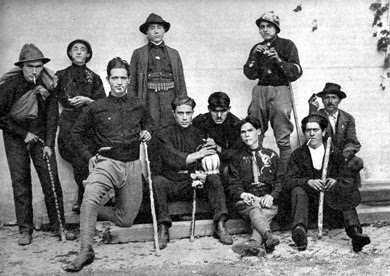
Italian Blackshirts in the early 1920s. There is a Fascist song from those times that says (translated), “Fascists and Communists were playing cards. The Fascists won with the ace of clubs.” But the clubs used by the Fascists were only a marginal elements in a struggle that had as a fundamental factor the supply of energy to the Italian economy.
History, as we all know, may not repeat itself, but it surely rhymes. So, the theme of a civil war and of a return of Fascism is much discussed in the US nowadays. What kind of rhymes with past events can we perceive? On this point, I can propose to re-examine how Fascism took over in Italy, in the early 1920s, and in particular how it was related to energy supply factors. It is not, and it cannot be a complete analysis, but maybe it can help us understand what’s going on.
In the 1920s, Italy was reeling from the tremendous effort of the First World War while the major allied powers, Britain, France, and the US, were carving the pie of the victory among themselves, leaving only crumbs for Italy. There were reasons for that; the main one was that the Allies saw Italy as more of a burden than a help during the war. In any case, there had been no “peace dividend” for Italy.
That was not the only problem for Italy, an even more important one was the dependency on British coal for its energy supply. In the aftermath of the war, the British coal production had peaked was headed for decline. You can see the data, below.
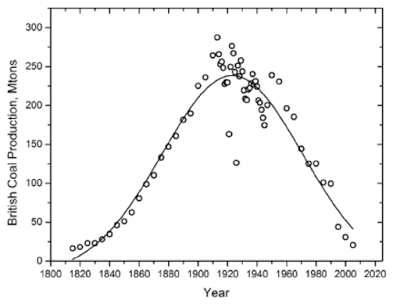
…click on the above link to read the rest of the article…
Money for the People
 Local initiatives can lead to modest gains in sustainability, but not the large-scale transformation we need. Meeting that challenge will require, among other critical factors, substantial changes in how we create and use money. As its history demonstrates, money is a social and political construct. It is the privatization of money—and not money itself—that has fueled social exploitation and environmental destruction. Money could, by contrast, help advance a Great Transition—but only if it is reclaimed for the public. Contrary to neoliberal assertions, the state can create money free of the debt that drives destructive growth and fosters inequality. Such public money can facilitate the provision of economic security and sustainable livelihoods for all. But for such a system of public money to work, there must be robust democratic control over monetary decision-making along with vigorous oversight of its implementation.
Local initiatives can lead to modest gains in sustainability, but not the large-scale transformation we need. Meeting that challenge will require, among other critical factors, substantial changes in how we create and use money. As its history demonstrates, money is a social and political construct. It is the privatization of money—and not money itself—that has fueled social exploitation and environmental destruction. Money could, by contrast, help advance a Great Transition—but only if it is reclaimed for the public. Contrary to neoliberal assertions, the state can create money free of the debt that drives destructive growth and fosters inequality. Such public money can facilitate the provision of economic security and sustainable livelihoods for all. But for such a system of public money to work, there must be robust democratic control over monetary decision-making along with vigorous oversight of its implementation.Why Money?
If we want to transition to a more just and sustainable society, we then need to be clear about where we are today. The majority of the world’s population—in both developed and developing countries—now lives in urban areas. This demographic reality is unlikely to change as people have shown no eagerness to return en masse to rural livelihoods. Local, face-to-face innovations in production and exchange can be important steps, prefiguring the progressive society-wide changes needed. However, they are most appropriate for relatively self-contained areas, and cannot aggregate to the systemic transformation required.
In the contemporary world, provisioning, the creation and distribution of basic goods and services, depends on money. Most people live in market economies with moderate- to long-distance supply chains. Under market-driven capitalism, individual livelihoods and public services depend on the success of the market, and money functions both as the medium of exchange and as the driving force behind market participation.
…click on the above link to read the rest of the article…
The 2017 Stress Tests: Are US Banks Really in Good Shape?
“… equally efficacious, and equally a hoax.” – Benjamin Disraeli, 1848
One of the highlights of the U.S. summer for Fed watchers is the annual ritual in which the Fed’s economic soothsayers peer into their crystal balls, a.k.a. their stress tests, to reassure us that the U.S. banking system is robust and getting stronger all the time.
You see, while the future is uncertain, the results of the stress tests are not. Praise be that the news is always good and getting better.
This year, the news is particularly good. As usual, the key capital metrics across the system are better than ever. And whereas in previous years there were always dunces who failed, the latest set of stress tests are the first in which all the banks passed and this year’s class laggard, Capital One, got only the mildest of slaps on the wrist.
As James Ferguson of The MacroStrategy Partnership notes in a recent commentary on the latest stress tests:
… everywhere you look, the Fed now seems to be bending the rules in the banks’ favour. … This [stress test] appears to be a test that has been designed to be passed.”
In fact, the Fed is so pleased with the performance of its stress-test examinees that it decided to reward them (or, more precisely, their shareholders) with a big dividend/buyback party that will give them a big windfall. The Fed provides the punchbowl which will be paid for by other bank stakeholders including taxpayers — yes, the same taxpayers who are still being compelled to subsidize the banks (via Too Big to Fail, deposit insurance, and such like) to take excessive risks and overleverage themselves, and who stand to pay the bill if there is another crisis and the banks get bailed out again.
…click on the above link to read the rest of the article…
Guard Your Mind Like the Precious Resource It Is

I’m concerned about a better world. I’m concerned about justice; I’m concerned about brotherhood; I’m concerned about truth. And when one is concerned about that, he can never advocate violence. For through violence you may murder a murderer, but you can’t murder murder. Through violence you may murder a liar, but you can’t establish truth. Through violence you may murder a hater, but you can’t murder hate through violence. Darkness cannot put out darkness; only light can do that.
– Martin Luther King, Jr. (1967)
Something I’ve been working on personally is becoming more in control of my emotions and, more importantly, trying not to immediately respond when something makes me angry. In order to do this, I’ve found it necessary to be conscious of the anger itself. Specifically, I’ve noticed that when we get angry we tend to move into a state of mind that is obsessively focused on the source of this anger. We dwell on how we were wronged over and over in our minds like an uncontrollable movie, which then makes us even more angry. In an attempt to stop the movie and momentarily feel better about the situation, we tend to lash out. It feels good for a second, but it almost never gets you anywhere.
Anger and fear are two emotions that serve important evolutionary purposes and certainly have their place, but I’ve found neither to be productive when it comes to solutions to serious problems, or to establishing better relationships with those you care about. When one is angry or fearful the instinctual response is to do whatever might make you feel better in the moment. Allowing oneself to react from a state of fear or anger will almost always lead to poor decision making, unless you are actually in a situation that requires such a response.
I discussed this concept in May’s post, Do Ends Justify the Means?
…click on the above link to read the rest of the article…






